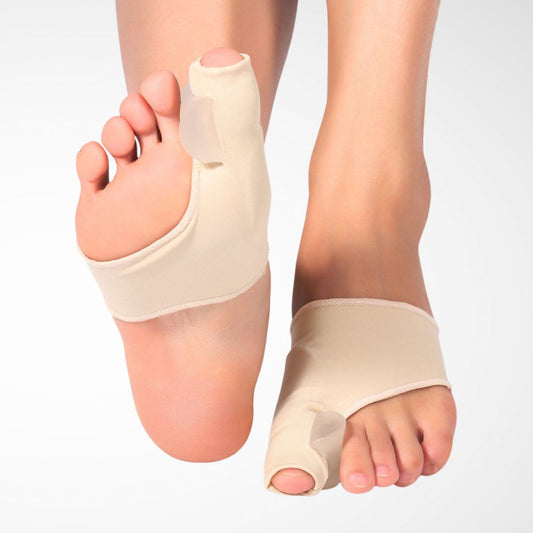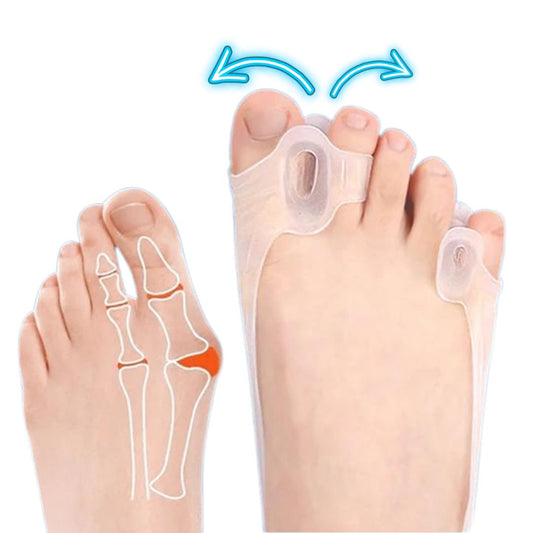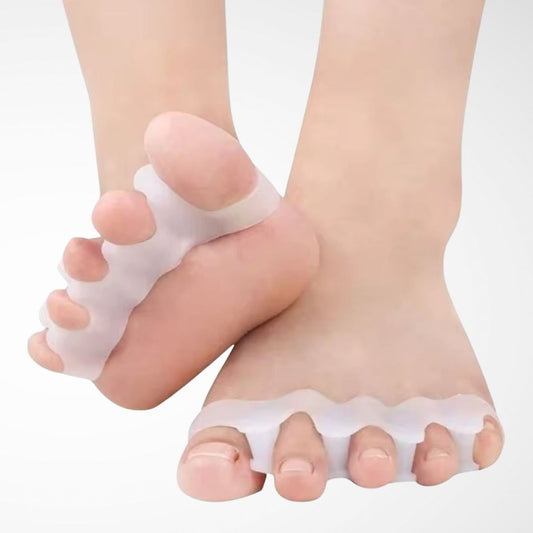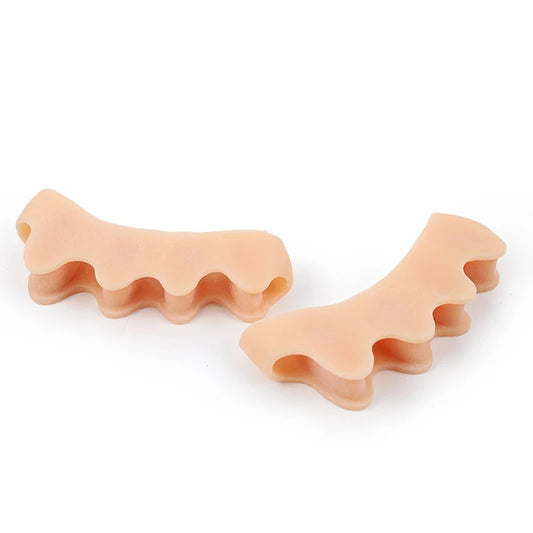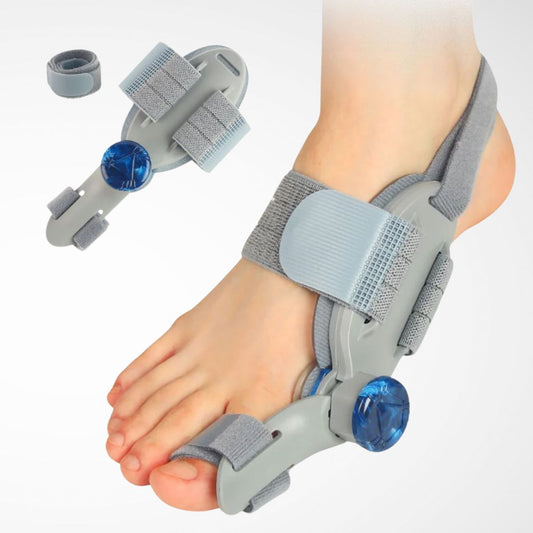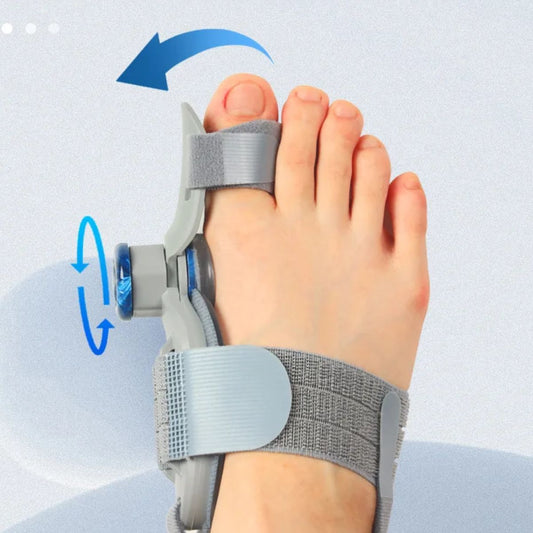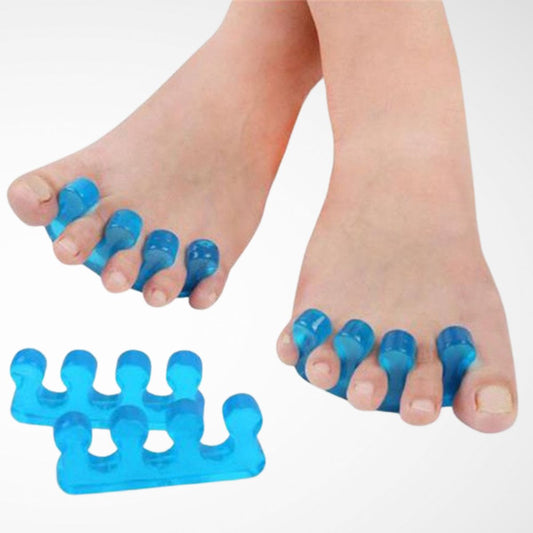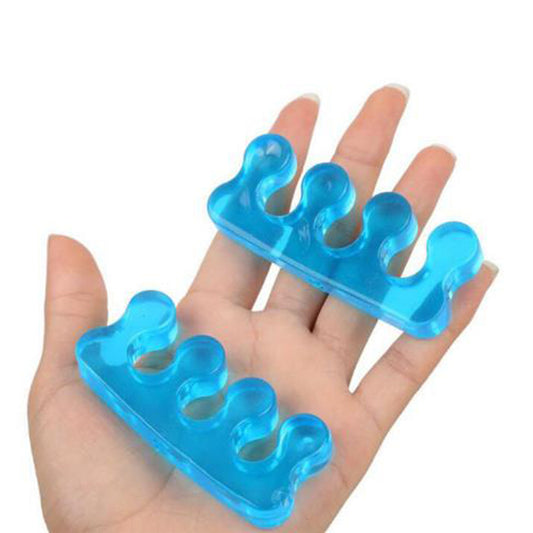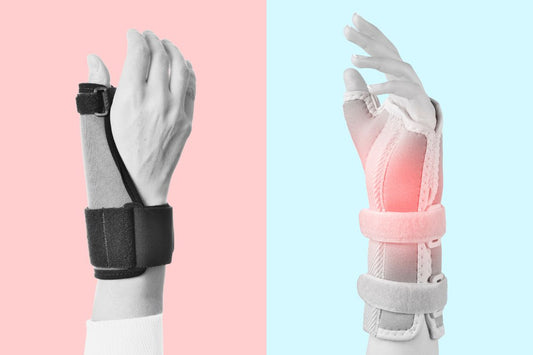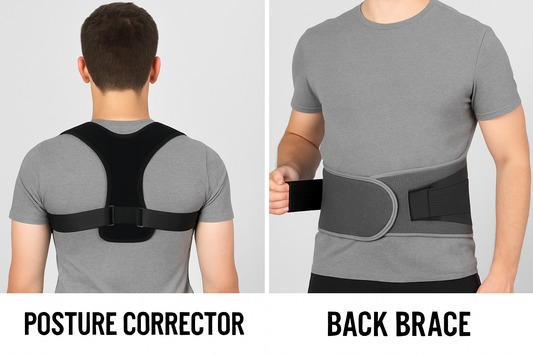Introduction
Bunions can be a persistent and painful problem, often caused by structural defects, arthritis, or wearing tight shoes. When left untreated, they can affect your mobility and overall foot health. Choosing the right bunion corrector can make a significant difference in managing pain, slowing progression, and enhancing comfort. But with so many options available, how do you know which one is best for you? In this guide, we’ll explore the different types of bunion correctors and help you make an informed decision.
What Are Bunions?
A bunion is a bony bump that develops at the base of the big toe, where it meets the foot. This condition, also known as hallux valgus, occurs when the big toe deviates inward toward the other toes, forcing the joint to protrude outward.
There are several causes of bunions, including:
- Genetics and inherited foot structure.
- Long-term use of narrow or tight footwear.
- Arthritis, particularly rheumatoid arthritis.
- Flat feet or abnormal foot mechanics.
Bunions can cause pain, inflammation, swelling, and even limit the range of motion in the affected joint. When left untreated, they can worsen over time, leading to more severe discomfort and potential complications.
For additional information on bunions and their causes, see the comprehensive overview provided by the Cleveland Clinic and Mayo Clinic.
Different Types of Bunion Correctors
Bunion correctors come in various designs, each tailored to address different aspects of bunion management. Understanding these types will help you find the most suitable option for your needs.
1. Toe Spacers / Toe Separators
Toe spacers, also known as toe separators, are designed to gently separate the toes, promoting proper alignment and preventing them from overlapping. Made from soft silicone or gel materials, they provide a cushioned and comfortable fit that is particularly useful for reducing friction and pressure between toes.
Toe spacers are typically worn during relaxation, yoga, or even while walking in wider shoes. While they don’t directly correct bunions, they can help relieve pain, reduce inflammation, and prevent further misalignment when used consistently.
📌 Best for:
- Mild bunions where the toe alignment is slightly off.
- Preventing friction and irritation between overlapping toes.
- Pedicures and activities that require toe separation, such as yoga or pilates.
📌 Ideal Use:
- Barefoot, during relaxation or exercise.
- Can be worn with compatible footwear like wide-toed shoes.
📌 Limitations:
- Not suitable for severe bunions where structural correction is needed.
- Provides temporary relief but does not offer lasting correction.
2. Bunion Pads / Bunion Sleeves
Bunion pads and sleeves are primarily designed to provide cushioning and protection over the bunion area, reducing pressure and friction that can cause pain during daily activities. They are often made of gel, foam, or fabric materials that fit snugly over the joint, offering relief from shoe rubbing or pressure.
Unlike toe spacers, bunion pads and sleeves do not attempt to realign the toe but focus on comfort and pain management. They are a popular choice for individuals who experience irritation from footwear or those who require additional padding for day-long activities.
📌 Best for:
- Reducing pain from shoe pressure and friction.
- Providing cushioning for people with sensitive or inflamed bunions.
- Preventing calluses and skin irritation from constant rubbing.
📌 Ideal Use:
- Under footwear during regular daily activities.
- For those who require immediate pain relief but are not looking for structural correction.
📌 Limitations:
- No corrective properties; will not realign or prevent progression of bunions.
- May provide only temporary relief depending on the severity of the condition.
3. Adjustable Bunion Corrector / Bunion Splint
Adjustable bunion correctors, often referred to as bunion splints, are designed to provide structural support and encourage the realignment of the big toe joint. These devices are commonly worn during periods of rest or sleep, applying gentle but consistent pressure to gradually correct the position of the toe.
Made with materials such as padded fabric, plastic splints, or soft silicone, they are adjustable to accommodate various foot sizes and levels of correction. Splints are typically recommended for moderate to severe bunions or those who wish to prevent further misalignment.
📌 Best for:
- Moderate to severe bunions where realignment is desired.
- Individuals seeking non-invasive solutions for structural correction.
- Overnight correction and relief from discomfort during rest.
📌 Ideal Use:
- During rest or sleep for maximum effectiveness.
- Not recommended for wear during exercise or under tight footwear.
📌 Limitations:
- May not be suitable for active use or walking.
- Requires consistent use over time for noticeable results.
- May cause discomfort if not fitted correctly.
How to Choose the Right Bunion Corrector
Selecting the right bunion corrector depends on your individual needs, lifestyle, and severity of the condition. Here are some factors to consider:
- Severity of Your Bunion: For mild bunions, toe spacers or bunion pads may provide adequate relief. More advanced bunions may require a structured splint for effective correction.
- Intended Use: If you’re looking for relief while wearing shoes, bunion pads or sleeves may be the best option. For more corrective purposes, a bunion splint is recommended, particularly during rest.
- Comfort and Fit: Look for high-quality materials that offer comfort during wear, especially if you plan to use the corrector for extended periods.
- Lifestyle: Choose a product that suits your activity level. For athletes or individuals who are always on their feet, low-profile bunion pads or spacers are generally more suitable.
Research and Effectiveness of Bunion Correctors
The effectiveness of bunion correctors remains a subject of ongoing research, with mixed results. Current studies suggest that while bunion correctors may provide temporary pain relief, their ability to permanently realign the toe or prevent bunion progression is limited.
According to a systematic review and meta-analysis published by Arthritis Care & Research, various nonsurgical interventions for hallux valgus, such as splints, toe separators, and orthotics, were assessed for their efficacy. The study concluded that while interventions like night splints, foot exercises, and multifaceted physical therapy can reduce pain, they have minimal impact on correcting the actual deformity. Reduction in pain, however, was found to be clinically significant in some cases.
An article by Healthline further supports these findings, noting that while bunion correctors can offer temporary pain relief, their effectiveness in achieving complete realignment of the big toe remains uncertain. Additionally, current research provides limited evidence that they can halt or reverse bunion progression.
It’s important to note that bunion correctors may be more effective for short-term relief rather than structural correction. They are generally best used as part of a broader management plan that may include footwear modifications, orthotic use, pain-relieving strategies, and, in some cases, surgical intervention.
Therefore, while bunion correctors are a non-invasive option for managing discomfort, they should not be considered a definitive solution for correcting bunions. For long-term or severe cases, consulting with a medical professional remains important.
Conclusion
Finding the right bunion corrector is essential for managing pain, improving alignment, and enhancing your overall comfort. Whether you choose toe spacers for mild relief, bunion pads for everyday protection, or an adjustable splint for more structured correction, the key is consistency and finding the device that best suits your lifestyle and needs.
Explore our full range of bunion correctors and take the first step toward better foot health today.





